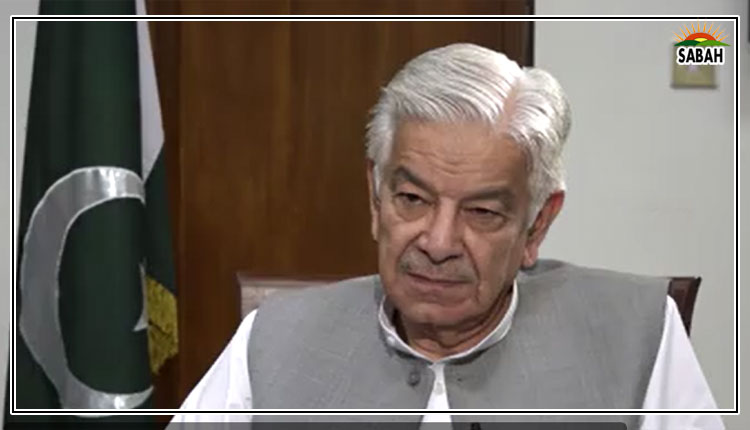Central Asia and the BRI….Dr Murad Ali
One major geographic characteristic of Central Asian countries is their landlockedness. Being a landlocked economy creates challenges in all spheres of policy foreign policy, security, international trade as well as overall human development.
Research illustrates that the average GDP of landlocked countries achieves only 57 per cent of their maritime neighbours. In such geographically constrained and disadvantaged economies, the cost of shipping reaches 10 per cent above that of maritime countries. Hence, the combination of geographic location, trade and economic growth explains the cost of being landlocked. Landlocked countries suffer from about a 30 per cent handicap in comparison with their maritime competitors. According to the UNDP, most non-coastal countries are at the bottom of the list on the Human Development Index.
Since their independence, leaders of the new states of Central Asia recognized and articulated the limitations of their landlocked geography and sought increased transportation and connectivity as a means to deal with this obstacle. Nazarbayev, Kazakhstans first president who ruled the country for nearly three decades, stated at that time that lack of access to the sea could be detrimental to the countrys economic development as well as its political independence. President Karimov of Uzbekistan expressed similar sentiments, emphasizing the need to seek new solutions to these problems, with an effective transportation system and secure access to the sea for smooth international trade.
The unabated conflict in Afghanistan also impeded the attempts of the Central Asian States to reach the Indian Ocean, geographically the closest warm water ports for the region. While there has been optimism that a peaceful Afghanistan would enable transit trade to the region, these expectations have yet to be realized. The US-led New Silk Road strategy, announced in 2011, offered to remedy this situation, but it never gained significant momentum. It suffered from a lack of top-level support in the US administration and from the fact that it was originally an exclusively north-south affair, failing to include the Caucasus.
Against this background, significant advances have been made unilaterally by regional states. Leading among these is the Baku-Tbilisi-Kars railroad, built by Azerbaijan, Georgia and Turkey. While these were separate affairs, a large-scale vision for transportation infrastructure that would relieve Central Asias landlocked nature did not arise until Beijing formalized its earlier disparate initiatives into the Silk Road Economic Belt, which subsequently came to be encompassed within President Xis grand Belt and Road Initiative (BRI).
Both China and Central Asian countries see the initiative as a win-win proposition, and it has also provided an opportunity to Beijing to further expand and cement its footprints in Central Asia. The BRI integrates countries of Central Asia with a new and multi-faceted transportation network, as well as connecting Central Asia to far-away countries and markets. Hence, one can discern that Chinas early BRI diplomatic successes are clustered with former Soviet countries in Central Asia as they are relatively less committed to US-led initiatives.
On account of their geographical location, these countries are vital to effectively connect Chinas overland to Europe, the Persian Gulf and the Mediterranean. As per the BRIs official document released in March 2015 by Beijing, the initiative aims at jointly building a new Eurasian Land Bridge and developing China-Mongolia-Russia, China-Central Asia-West Asia and China-Indochina Peninsula economic corridors by taking advantage of international transport routes.
In addition to their geography, the region has abundant natural resources. For instance, Kazakhstan has massive oil reserves as well as uranium. Turkmenistan provides about half of Chinas imported gas. It is worth mentioning that China National Petroleum Corporation (CNPC) has emerged as a dominant actor and is one of the leading foreign investors in the Central Asian oil and natural gas sector.
Besides its geoeconomic benefits to China, Central Asian countries also recognize the BRI to be a source of much-needed financial injection to upgrade and improve physical infrastructure that could lead to better connectivity and enhanced trade, along with increased stability. Unprecedented investment in infrastructures under the BRI is expected to further promote interconnectivity and improve regional trade cooperation through the creation of a trans-regional transport network.
While China and Central Asian economies have high hopes for the BRI, there are also some issues that warrant considerable attention. For example, in the context of Central Asia as well as elsewhere where Beijing has invested heavily in infrastructure-building, one of the key challenges for Sino-Central Asia cooperation within the BRI will be the capacity of these countries to repay the huge loans granted by China. While some of the countries have vast natural resources and are well-placed economically, it is feared that Kyrgyzstan and Tajikistan could especially suffer from this predicament because they have little energy reserves, raw materials or goods to sell in international markets.
Hence, countries that lack substantial natural resources or are without a reasonable industrial base to diversify and bolster their exports could end up accumulating additional foreign debts and could thus jeopardize their own political and financial sovereignty. There is already a negative public opinion in many countries regarding the growing Chinese influence, particularly concerning the (mis)perceptions of debt trap and predatory loans. The case of Sri Lanka is the most glaring example that critics of Chinese lending policies are quick to cite.
Due to this, while many foreign leaders continue to lavish praise upon Beijing for addressing unmet infrastructure needs, China is also facing a rising BRI backlash in a number of countries across Africa, Asia, and Central and Eastern Europe. For example, in his book Chinas Western Horizon: Beijing and the New Geopolitics of Eurasia, Daniel Markey argues that despite their close bilateral state-to-state ties, at the popular level, Kazakhstan suffers from serious Sinophobia. For anyone unfamiliar with Kazakhstan, the intensity of that anti-China sentiment is surprising.
Unfortunately, in most cases of unsustainable loans, governments in host countries are primarily responsible for sound policymaking and not the lender. It is the duty of recipient countries to choose projects with good returns rather than to appease their domestic constituencies, as was the case with Mahinda Rajapaksa.
To effectively counter Sinophobia could be a litmus test for China to use its soft power and its diverse relations with those countries that are participating in the BRI. Although Central Asia has predominantly remained under the geopolitical influence of Russia, Beijing and Moscow have shared regional interests that pertain to ensuring security, stability and order as a key priority to pursue their increasingly converging foreign policy and economic objectives. Furthermore, they also share a mutual interest in establishing a multipolar, post-unilateral world order that can put an end to the global supremacy of the US.
On account of all these factors, China faces no opposition from Russia in making inroads in its backyard as both countries have expanded their bilateral ties in recent years.
The writer holds a PhD from Massey University, New Zealand. He teaches at the University of Malakand. He can be reached at:
muradali.uom@gmail.com
Courtesy The News












